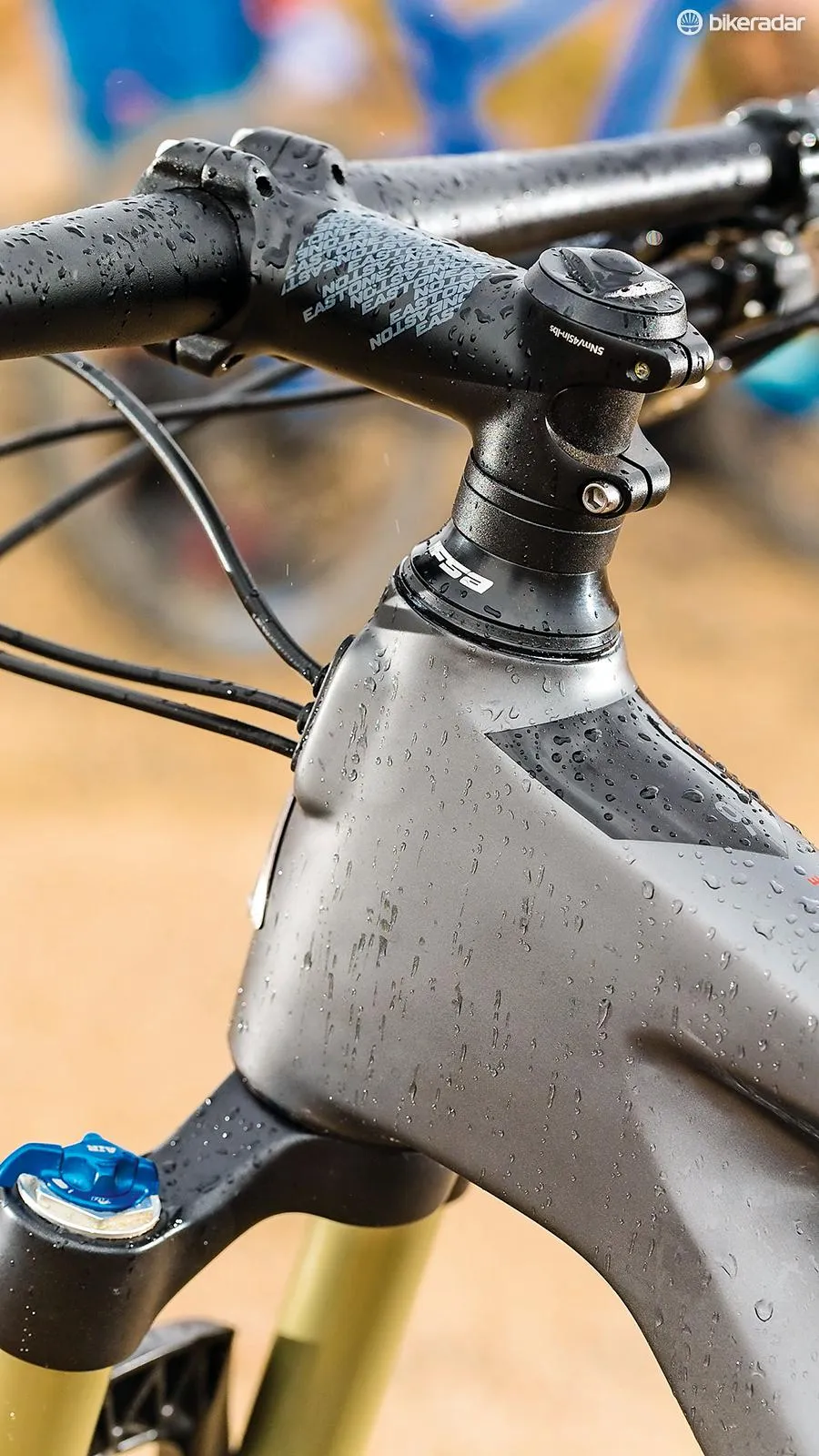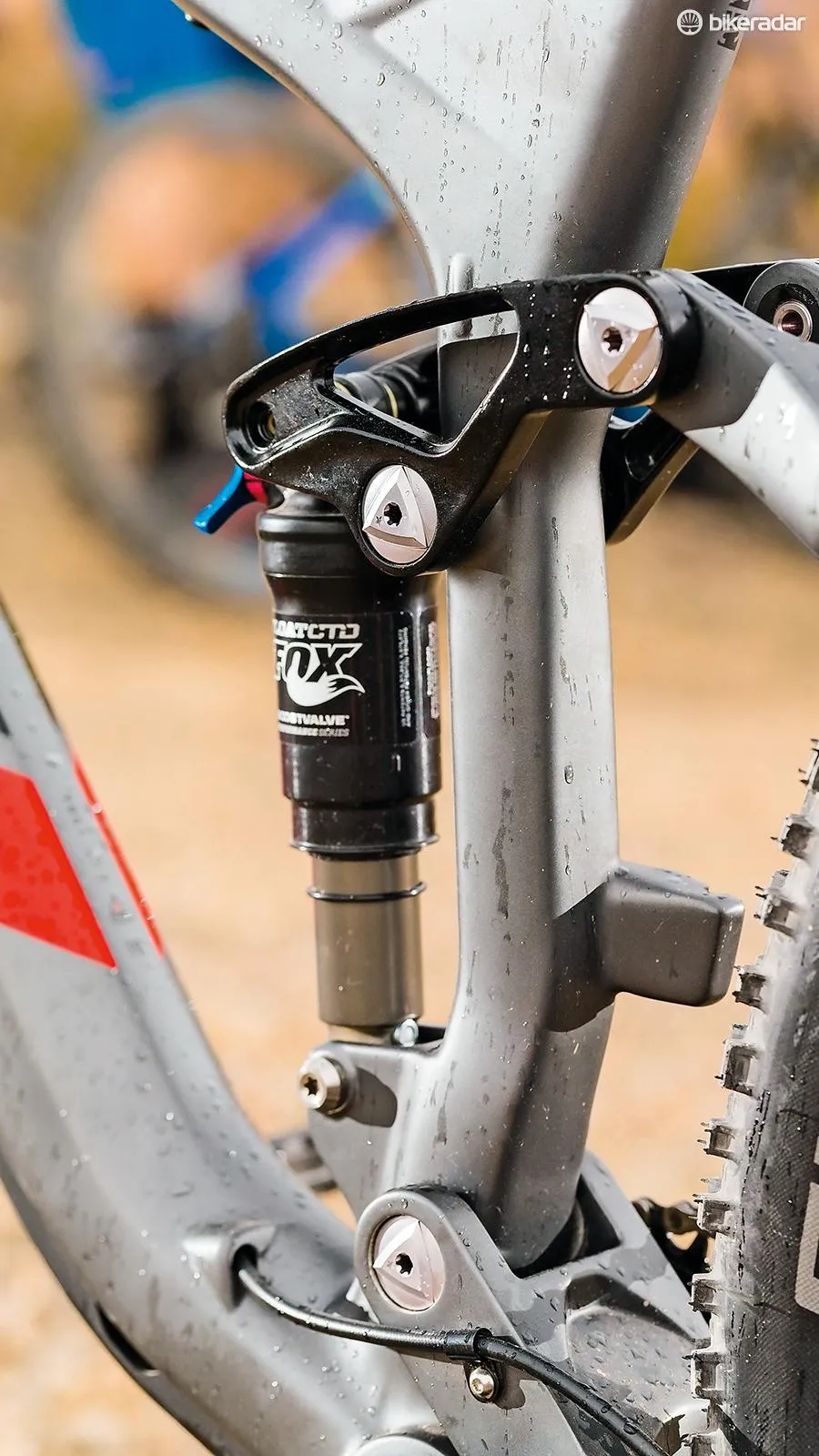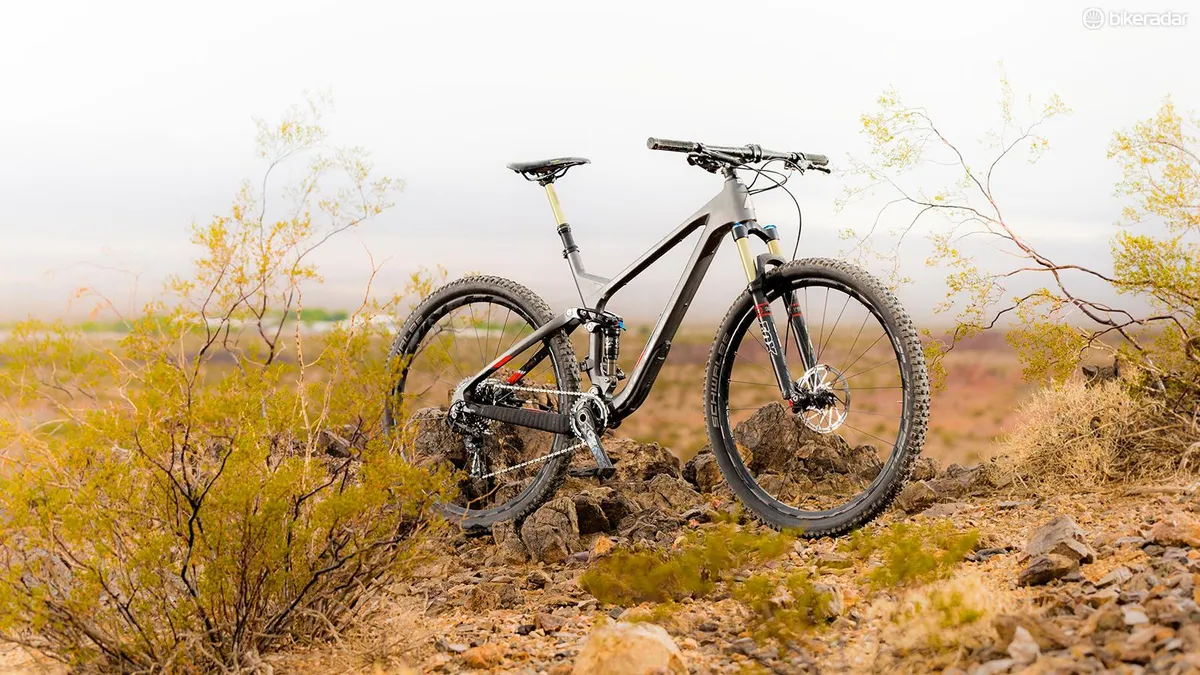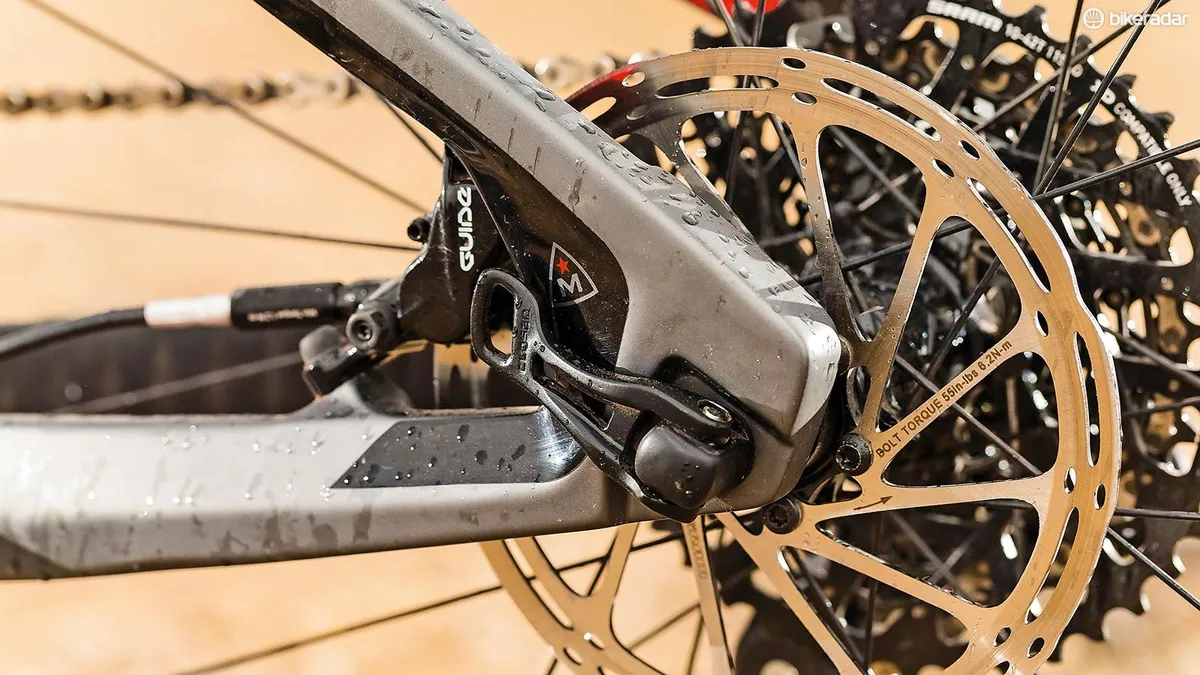Marin has had a short travel big wheel Rift Zone in its range for a while now (we reviewed one just a few months back) but it’s always been an ‘affordable’ alloy machine. The latest RZ rolls into action with a full carbon chassis and SRAM/Easton components that promise versatile trail velocity, but does it deliver?
Frame and equipment: big and bold
Alongside super skinny-tubed cross-country machines the new Rift Zone frame is obviously a sturdier build. Big slab sided tubes and oversized headstock, thick set horseshoe seatstay junction and other joining sections are finished in a metallic grey that reminded us of non-stick baking tins.

The cockpit is aimed at the head-down, big-mileage crowd
The mix of 110mm of rear travel and 29er wheels for speed, plus in-moulded chainguide mounts on the conventional bottom bracket, a big plastic down tube guard and internal dropper post routing show it’s designed to let you have your cake and eat it. Marin saves weight and increases lateral stiffness compared with conventional cartridge bearing suspension pivots by using the same IsoTrac flexible seatstay concept as its Mount Vision trail bike. Again the tubes are very thick compared with the flat leaf spring-style sections used in most flex based systems and a 142x12mm screw-thru rear axle locks everything down very tight.
That’s not just a theoretical ‘very tight’ either as the RZ carves round smooth corners with rock solid authority and line holding is still impressively accurate despite the slightly flexible structure of the Fox 32 29er fork. The Easton Haven wheels are tighter than you’d expect for a relatively light 24-spoke 29er wheel. Schwalbe’s evergreen Nobby Nics come in a medium compound Trailstar front and harder compound Pacestar combo for fast rolling speed and extended life without faint-hearted cornering grip. In other words the stage is set for us to be impressed by what sounds and looks like a tenacious and naturally fast short travel trail machine.
Ride and handling: an uneven blend
Whatever composite cake recipe Marin has put into the baking tin look frame it’s soon obvious that it lacks self raising flour, and the 12.4kg overall bike weight is certainly not light and fluffy. It doesn’t feel it on the trail either and cheaper, longer travel bikes we've tested have been noticeably easier to accelerate or encourage up climbs. On the bright side the deep stays and the brake spanning the gap between them further forward than usual limit stop the usual pedal bounce of flex stay bikes. That means you don’t have to dive for the ProPedal lever on the low set shock whenever you want to get the wattage down.
The TALAS fork can also drop its travel with a flick of the top cap switch if you want a tighter turning character for swinging round switchbacks or ducking and diving between trees at slow speeds. The relatively long stem creates a more firmly weighted XC rather than light and lively steering character anyway. This combines with the stiff frame and 29er wheels to build a bike that likes to commit to a turn early and hold a hard line rather than tripping into turns at the last second and then tweaking traction all the way through.

Lack of pivots severely impacts bump performance
The suspension is also configured to work best over rolling, slow speed rises and falls where it takes the bounce out of G outs and keeps the rear wheel on the ground across smooth dips and depressions. You can run more sag than you might expect for reasonable small bump absorption and chatter damping traction, without the back end bouncing too much when cranking the pedals, or blowing through its travel.
While it’s okay coping with less taxing terrain, both ends of the Marin start to struggle when the hits come harder and faster. Considering how well specced last year’s bike was for the money it’s a surprise to find a mid-range Performance Fox fork on the Rift Zone rather than a top spec Factory unit. The way it slaps and bangs across sharper, faster hits rather than smoothing them out betrays its lower grade spec obviously too.

The basic Fox Performance shock isn’t something we want to see at this price
It’s exactly the same story at the back, with the Performance shock and stiff IsoTrac sub frame getting hung up really badly on square edges and step-downs. Whatever we did with pressure and the external damping settings, ploughing the Marin into rocky sections left the back wheel feeling like it was being hit by a spade and speed sustain suffered accordingly, despite the 29er wheels.
While the SRAM X01 transmission and Guide brakes performed as well as we’ve come to expect the alloy Easton cockpit kit is at odds with carbon bars on other similarly priced bikes. Add the choppy suspension and high weight and Marin has definitely got some work to do to make the Rift Zone 9 properly competitive.
Using a flexible stay section rather than a freely rotating pivot is an evergreen idea with weight and reduced servicing advantages. But balancing the amount of spring in the back end with overall bike character and the tune of the rear shock can be a really hard job to get right, as Marin’s new Rift Zone proves.



